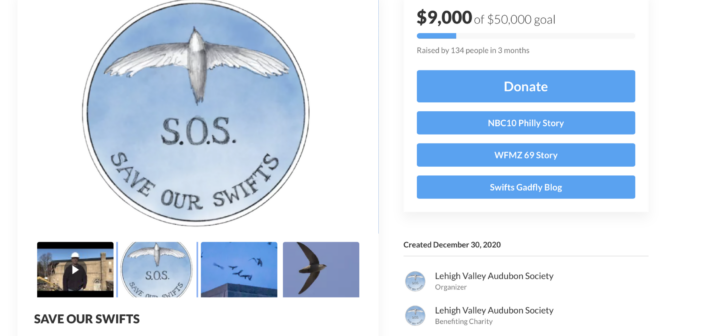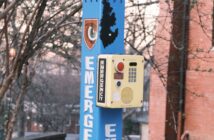Bethlehem Public Library hosted a panel discussion last week focused on saving chimney swifts, the official bird of the City of Bethlehem.
The panel featured developers, environmentalists and citizens engaging in an open discussion on saving the chimney swift and preserving their habitat in an effort to improve the city’s harmony with nature.
Chimney swifts are birds with four inch wingspans. They are very fast and their feet are small, making it impossible for them to land on the ground.
Chimney swifts are tropical migrants, meaning they spend their winters in the tropics, only coming North in the early spring for breeding.
Scott Burnet, chairman of the Lehigh Valley Audubon Society’s Habitat Committee, said chimney swifts are attracted to the region due to the “incredible flush of insects that occur here.”
Chimney swifts get their name from the location where they build their nests—inside of chimneys. This is because chimney swifts are only able to perch on vertical surfaces with their sharp, small talons.
Local developer John Noble is the owner of the Wilbur Mansion, located at 202 Wyandotte St., which is home to one of the largest concentrations of chimneys in the Lehigh Valley.
“There are tens of thousands of birds using that chimney during the migration period in the fall,” Burnet said. “They’re losing their nests due to new steel chimneys replacing old brick chimneys. Three out of four chimney swift pairs don’t live to breeding age, and that’s really a shame.”
Noble, like many other Bethlehem residents, was unaware of the chimney swifts and their nests.
As the building’s demolition date approached, Noble said a neighbor informed him that the chimney is a habitat for the swifts.
“All of a sudden the project became a passion for me: how do we save these birds?” Noble said.
Noble decided to contact president of the Lehigh Valley Audubon Society, Peter Saenger.
Developers contacting the Lehigh Valley Audubon Society is “almost unheard of,” according to Saenger.
“When John called me I was thinking that it was a waste of time… 99 percent of these things end in failure,” Saenger said. “When he came back with positive news I almost fell out of my chair.”
After talking with Saenger, Noble decided that he needed to save the chimney for the swifts.
Instead of tearing it down, Noble is building his new restaurant and conference center around the building’s prominent chimney, while reinforcing it to make sure it will be there for the future.
“It will be the driving force behind the project,” Noble said. “It’s really a win for everyone.”
The swift is a federally protected bird, meaning it is illegal to harm a swift or its habitat while it is living there. However, since swifts are tropical migrants, they are only at their Bethlehem habitat during the spring, meaning that chimneys can be torn down while they are not there, giving them no spot to return to when they migrate back up North.
“What John did for this and for the education of everyone almost made me cry,” Saenger said.
In order to raise awareness for chimney swifts, Bethlehem has named the swift the official bird of the city.
“The swifts are our neighbors, they live in homes and our businesses, they are our friends and we have to protect them,” Burnet said.






Comment policy
Comments posted to The Brown and White website are reviewed by a moderator before being approved. Incendiary speech or harassing language, including comments targeted at individuals, may be deemed unacceptable and not published. Spam and other soliciting will also be declined.
The Brown and White also reserves the right to not publish entirely anonymous comments.
2 Comments
Hope B&W could have resource before summer break for optimistic research to report chimney swifts are not doomed, as article now reads. As chimneys are practically now ornamental and more and more older and newer ones become metal lined by codes, I expect thebirds’ strange capabilities for survival can be transferred to environments other than insides of chimneys with only masonry linings. Please try follow-up!
Something to keep in mind when designing future Lehigh buildings.